
This study aims to investigate how a specific type of distortion in imaging pipelines, such as read noise, affects the performance of an automatic license plate recognition algorithm. We first evaluated a pretrained three-stage license plate recognition algorithm using undistorted license plate images. Subsequently, we applied 15 different levels of read noise using a well-known imaging pipeline simulation tool and assessed the recognition performance on the distorted images. Our analysis reveals that recognition accuracy decreases as read noise becomes more prevalent in the imaging pipeline. However, we observed that, contrary to expectations, a small amount of noise can increase vehicle detection accuracy, particularly in the case of the YOLO-based vehicle detection module. The part of the automatic license plate recognition system that is mostly prone to errors and is mostly affected by read noise is the optical character recognition module. The results highlight the importance of considering imaging pipeline distortions when designing and deploying automatic license plate recognition systems.
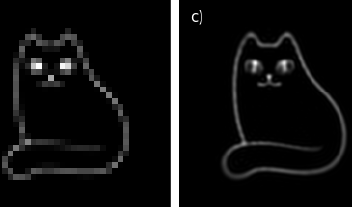
Recent works employing tools from quantum optics and quantum metrology proposed a new passive imaging technique that allows to resolve details far below the diffraction limit. This technique is based on replacing standard spatially-resolved intensity measurements, e.g. at each pixel of a camera, with spatial-mode demultiplexing (SpaDe) measurements that allow to acquire information in a more efficient way. In this contribution, we want to provide an intuitive explanation of why such a SpaDe approach is so effective, and illustrate how we used these idea to discriminate one point source from two, and to estimate the separation between two incoherent sources.
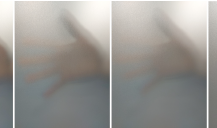
Transparent and translucent objects transmit part of the incident radiant flux permitting a viewer to see the background through them. Perceived transmittance and how the human visual system assigns transmittance to flat filters has been a topic of scholarly interest. However, these works have usually been limited to the role of filter’s optical properties. Readers may have noticed in their daily lives that objects close behind a frosted glass are discernible, but other objects even slightly further behind are virtually invisible. The reason for this lies in geometrical optics and has been mostly overlooked or taken for granted from the perceptual perspective. In this work, we investigated whether the distance between a translucent filter and a background affects perceived transmittance of the filter, or whether observers account for this distance and assign transmittance to the filters in a consistent manner. Furthermore, we explored whether the trend holds for broad range of materials. For this purpose, we created an image dataset where a broad range of real physical flat filters were photographed at different distances from the background. Afterward, we conducted a psychophysical experiment to explore the link between the object-to-background distance and perceived transmittance. We found that the results vary and depend on filter’s optical properties. While transmittance was judged consistently for some filters, for others it was highly underestimated when the background moved further away.
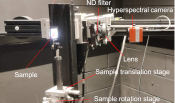
Gonioradiometry plays a fundamental role in understanding the scattering properties of materials. As light interacts with surfaces, its scattering behaviour varies across different incident angles, wavelengths, and surface characteristics. Gonioradiometric measurements offer a systematic approach to quantify these intricate scattering patterns, by means of the Bidirectional Scattering Distribution function. In this paper, a new approach is presented to quantify this Bidirectional Scattering Distribution Function, for which an existing measurement instrument has been enhanced by incorporation of a hyperspectral imaging device. The hyperspectral imaging system enables detailed spectral reflectance data collection for each pixel, paving the way for measuring samples where the reflectance properties vary along the surface. Challenges such as zooming and dynamic range constraints are addressed, with the paper detailing the design and evaluation of the system. The hyperspectral gonioradiometer offers promising avenues for future research and applications in visual appearance metrology and material characterisation.
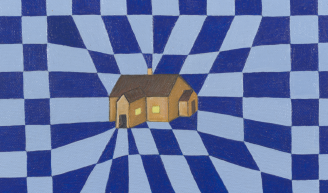
Multispectral imaging in contrast with hyperspectral imaging is a cheaper and more accessible method with a feasibly mobile setup. However, the restrained spectral resolution of multispectral images is a limitation that influences the applicability of this method in different fields. In this study, we tried to answer the question of whether multispectral images are suitable enough to be used in the spectral unmixing task. For this specific application, we explore spectral unmixing of an oil painting to obtain pigment maps. We observe that the performance of the multispectral imaging system in the pigment unmixing task is significantly influenced by two key factors: the number of bands in the multispectral imaging system and the spectral range covered by these bands in relation to the spectral features of the pigments present in the spectral library.
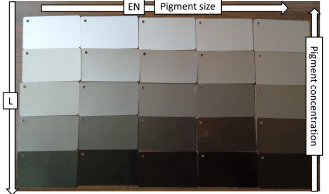
E-commerce has become the primary global shopping method, but the inability to physically inspect products presents challenges for consumers. This study focuses on the sparkle texture effect, significant in various industries. Evaluation tools are limited to two instruments, leading the International Commission on Illumination (CIE) to work on establishing measurement scales. The study proposes a rendering model sparkle utilising a metrologic scale based on the luminous point density and visibility probability distribution, by assuming a half-Gaussian shape which should be fitted to measurement data in order to obtain parameters μ and σ. The model algorithm was computed for 25 samples across three different geometries (15º:0º, 45º:0º and 75º:0º). The maximum deviation between measurements and the fitted function was found to be 0.09, indicating negligible discrepancies in terms of cumulative probability. The analysis revealed that μ tends to approach zero for all samples, while σ showed a correlation with the density of sparkle points dS, with a Pearson correlation coefficient exceeding 0.91 for all geometries, indicating a strong relationship between the two variables. A preliminary rendering is obtained, using Mobile Display Characterisation and Illumination Model (MDCIM) for the background colour.